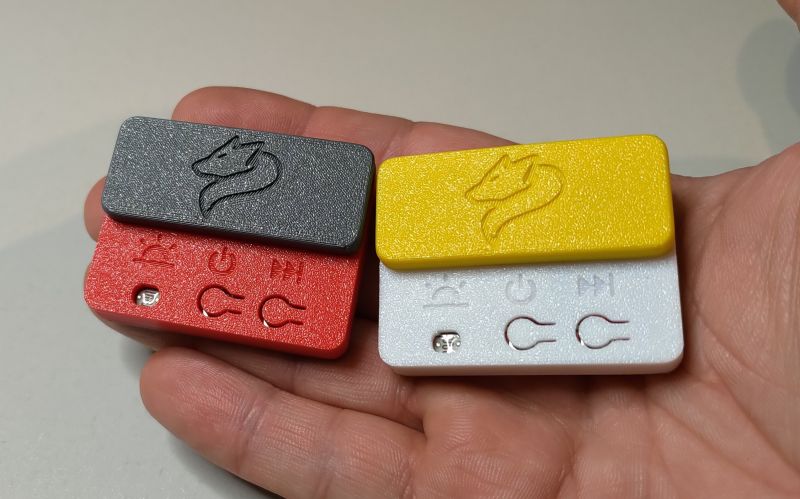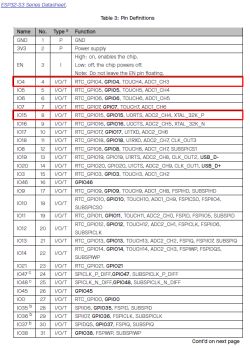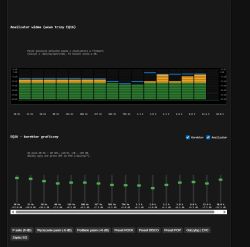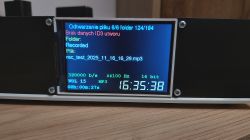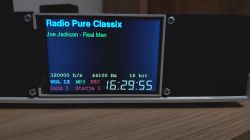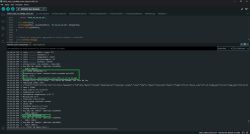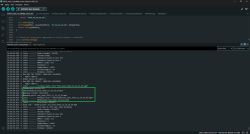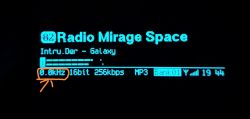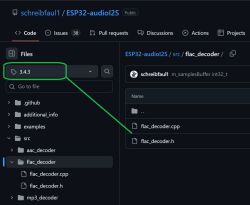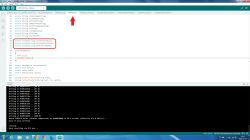Does anyone have the remote code for this remote control?
BS 1Set infrared remote control module kit - HX1838 wireless IR receiver! Ideal for DIY projects with Arduino
I have done something like this the radio does not respond .
// ############### HERE IS THE DEFINITION FOR THE NEC standard IR PILOT ############### //
// first byte address, second byte command (B914 - example: address B9 command 14) //
rcCmdVolumeUp 0xFF18E7; // volume +
rcCmdVolumeDown 0xFF4AB5; // Volume -
rcCmdArrowRight 0xFF5AA5; // right arrow - next station
rcCmdArrowLeft 0xFF10EF; // arrow to the left - previous station
rcCmdArrowUp 0xB987; // up arrow - station list step up
rcCmdArrowDown 0xB986; // down arrow - station list step down
rcCmdBack 0xFF6897; // return button
rcCmdOk 0xFF38C7; // Ent button - station validation
rcCmdSrc 0xB913; // Switching source radio, player
rcCmdMute 0xB916; // Sound mute
rcCmdAud 0xFFB04F; // Audio equalizer
rcCmdDirect 0xB90F; // Screen brightness, two modes 1/16 or full brightness
rcCmdBankMinus 0xB90C; // Promotes bank selection
rcCmdBankPlus 0xB90D; // Sets bank selection
rcCmdRed 0xB988; // Experimental function 1
rcCmdGreen 0xB992; // Experimental function 2 (VU mode 1, VU mode 2)
rcCmdKey0 0xFF9867; // Button "0"
rcCmdKey1 0xFFA25D; // Button "1"
rcCmdKey2 0xFF629D; // Button "2"
rcCmdKey3 0xFFE21D; // Button "3"
rcCmdKey4 0xFF22DD; // Button "4"
rcCmdKey5 0xFF02FD; // Button "5"
rcCmdKey6 0xFFC23D; // Button "6"
rcCmdKey7 0xFFE01F; // Button "7"
rcCmdKey8 0xFFA857; // Button "8"
rcCmdKey9 0xFF906F; // Button "9"
BS 1Set infrared remote control module kit - HX1838 wireless IR receiver! Ideal for DIY projects with Arduino
I have done something like this the radio does not respond .
// ############### HERE IS THE DEFINITION FOR THE NEC standard IR PILOT ############### //
// first byte address, second byte command (B914 - example: address B9 command 14) //
rcCmdVolumeUp 0xFF18E7; // volume +
rcCmdVolumeDown 0xFF4AB5; // Volume -
rcCmdArrowRight 0xFF5AA5; // right arrow - next station
rcCmdArrowLeft 0xFF10EF; // arrow to the left - previous station
rcCmdArrowUp 0xB987; // up arrow - station list step up
rcCmdArrowDown 0xB986; // down arrow - station list step down
rcCmdBack 0xFF6897; // return button
rcCmdOk 0xFF38C7; // Ent button - station validation
rcCmdSrc 0xB913; // Switching source radio, player
rcCmdMute 0xB916; // Sound mute
rcCmdAud 0xFFB04F; // Audio equalizer
rcCmdDirect 0xB90F; // Screen brightness, two modes 1/16 or full brightness
rcCmdBankMinus 0xB90C; // Promotes bank selection
rcCmdBankPlus 0xB90D; // Sets bank selection
rcCmdRed 0xB988; // Experimental function 1
rcCmdGreen 0xB992; // Experimental function 2 (VU mode 1, VU mode 2)
rcCmdKey0 0xFF9867; // Button "0"
rcCmdKey1 0xFFA25D; // Button "1"
rcCmdKey2 0xFF629D; // Button "2"
rcCmdKey3 0xFFE21D; // Button "3"
rcCmdKey4 0xFF22DD; // Button "4"
rcCmdKey5 0xFF02FD; // Button "5"
rcCmdKey6 0xFFC23D; // Button "6"
rcCmdKey7 0xFFE01F; // Button "7"
rcCmdKey8 0xFFA857; // Button "8"
rcCmdKey9 0xFF906F; // Button "9"



